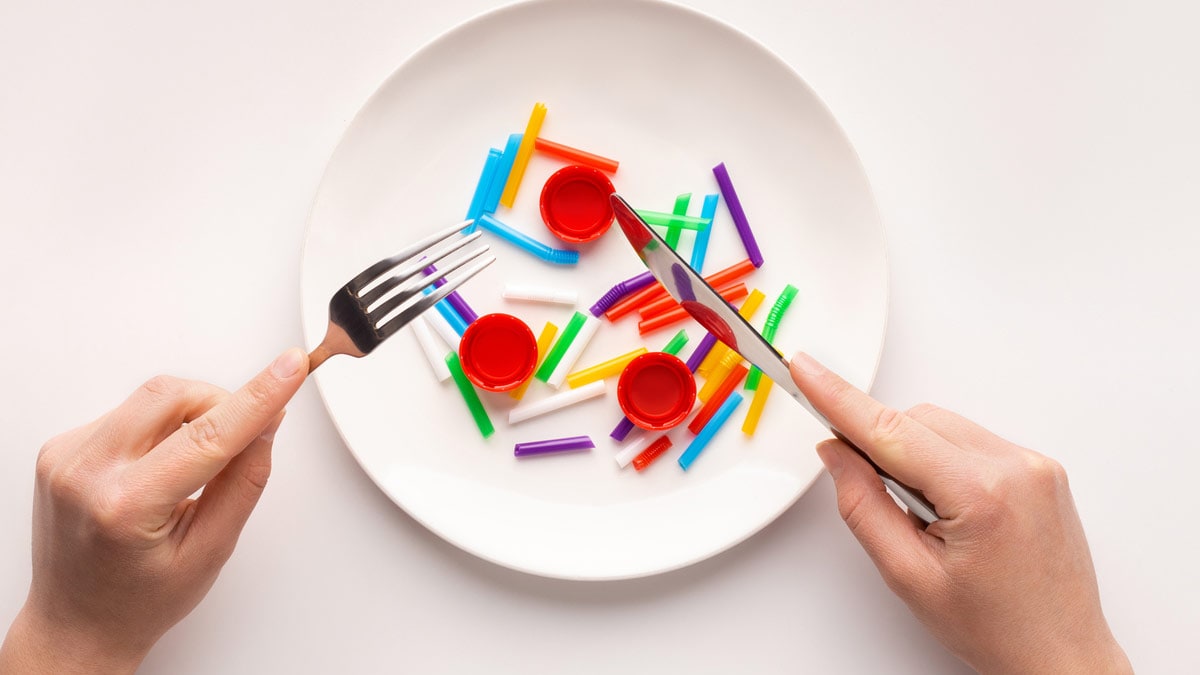Microplastics are plastic debris smaller than five mm. Those tiny pollution can unfold to air, water, and soil methods and contaminate the meals we devour. Nutritional microplastics are gathered in meals and from plastic subject material utilized in food and drinks manufacturing, processing, and ultimate product packaging. Many research have discovered that meals comparable to desk salt, seafood, meat, and beverages incessantly comprise microplastics that people can devour at the side of those meals. A brand new find out about through Cornell College researchers maps the microplastic human uptake throughout 109 world nations on 5 continents from 1990 to 2018, that specialize in the sector’s main coastlines which might be suffering from plastic air pollution. The findings of the find out about have been printed within the magazine Environmental Science and Era.
Amid fast commercial expansion, Indonesia tops the worldwide in step with capita microplastic nutritional consumption at 15g per month. In Asian, African, and American nations, together with China and america, airborne and nutritional microplastic uptake greater over 6-fold from 1990 to 2018. The microplastic focus in desk salt in industrializing nations, comparable to Indonesia, was once round 100 instances upper than that during the United States.
Why Are Microplastics Unhealthy for Us?
In some other analysis article, UC San Francisco Professor of Obstetrics and Gynecology and Reproductive Sciences Tracey Woodruff, PhD, MPH, explains that chemical substances like BPA, phthalates, and PFAS can mimic human hormones, the frame’s chemical messengers controlling processes like replica, expansion, and metabolism. Publicity to those elements has been proven to extend the chance of the whole lot from infertility to poorer fetal construction and most cancers.
Additionally Learn: “Intimidating”: Web Reacts To Rameshwaram Cafe Proprietor’s Explanation Video
A contemporary investigation confirmed 50% extra microplastics within the feces of people with inflammatory bowel illness in comparison to wholesome folks, spotlighting attainable threats to public well being.
How Can We Steer clear of Eating Microplastics and Different Toxins in Our Meals?
Listed below are some pointers shared through Professor Tracey Woodruff:
1. Do not microwave in plastic. Warmth makes plastic unlock destructive chemical substances like BPA, so all the time microwave in ceramic or glass.
2. Use glass or metal water bottles and keep away from purchasing plastic water bottles.
3. Purchase natural meals up to conceivable to cut back publicity to insecticides.
4. Steer clear of consuming a large number of purple meat. Many chemical substances have a tendency to acquire in fatty meals, so lowering your purple meat consumption may be a great way to cut back chemical publicity. Attempt to devour decrease at the meals chain on the whole, eating extra grains, end result, and greens, as a result of many poisonous chemical substances have a tendency to acquire in animals upper up within the meals chain as the ones animals devour different animals or vegetation.
Additionally Learn: five Sudden Intestine-Therapeutic Meals That Can Be Discovered In Your Kitchen – Professional Finds
The find out about through Cornell College researchers provides that removing 90% of world aquatic plastic particles can lend a hand lower microplastic uptake through greater than 48% in Southeast Asian nations with top microplastic uptake. “To cut back microplastic uptake and attainable public well being dangers, governments in creating and industrialized nations in Asia, Europe, Africa, and North and South The usa will have to incentivize the removing of unfastened plastic particles from freshwater and saltwater environments thru complicated water remedy and efficient forged waste control practices.”

